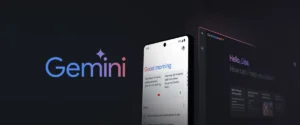
Mainstream Media
The mainstream media has always been one of the most powerful tools in shaping public opinion. The news we consume, therefore, plays a crucial role in shaping how we perceive the world around us. However, with so much information available today, it’s easy to fall prey to fake news, propaganda, and biased reporting, which has become a growing concern in recent years. In this blog post, we will provide a step-by-step guide on how to navigate the mainstream media, become more media literate, and avoid falling prey to false information.
Understanding the Mainstream Media Landscape
The mainstream media plays a vital role in shaping public opinion by presenting news and information that influence our understanding and beliefs. The media landscape consists of various channels, including print, electronic, and online media. These channels provide a different perspective on a particular event or issue.
The Pros and Cons of Traditional Media Channels
Traditional media channels, such as newspapers, magazines, radio, and TV, have been around for decades and have proven to be reliable sources of information. However, they are not without their flaws. Traditional media channels are more predictable and prone to providing biased and critical information, depending on their editorial stance or commercial interests. Newer channels, such as online news sites and social media, are more prone to propaganda and fake news, making it essential for readers to exercise caution.
The Art of Critical Reading
The art of critical reading involves developing an open, skeptical, and analytical mindset while consuming news content. When reading any article or news story, one should focus on the central message, facts, and evidence presented. Readers should question and verify the credibility of the content, the source, and the context. Moreover, they should look for alternative perspectives and further research the topic to develop an informed opinion.
Spotting Fake News and Biased Reporting
With the rise of social media, it’s easy for fake news and biased reporting to reach a wider audience. Spotting fake news involves scrutinizing the source, the content, and the tone. The sources’ reliability and reputation, the evidence presented, the language and the tone used all play a vital role in determining the validity of the news. Moreover, looking for alternative sources and seeking out expert opinions and fact-checking services can help identify fake news.
Investing in Alternative News Sources
Alternative news outlets offer a fresh perspective, challenge the mainstream narrative and provide readers with diverse news sources. Alternative news sources can provide readers with thought-provoking and challenging views, which help them develop a more comprehensive understanding of the world around them. Nonetheless, readers must invest time and effort in finding reliable alternative sources.
How to Determine Credible News Sources
Determining credible news sources involves identifying reputable publishers, examining the source, and checking the authenticity of the content. Reputable publishers have a history of publishing reliable, factual, and unbiased news. Additionally, checking for the author’s credentials, the authenticity of the quotes, and the sources cited can help determine the validity of the information presented.
With the vast resource of information on the internet and intense competition amongst media houses, finding credible news sources can be a challenging task. The mainstream media is just one of the many sources of information, and one should seek alternative sources, fact-checking services, and expert opinions to develop a well-rounded understanding of any topic.
Enhancing Your Media Literacy
Being media literate is essential in today’s world. It enables readers to sift through the vast amount of information, connect different sources of information, and develop their critical faculties. With the rise of misinformation and fake news, it’s essential to have a strong sense of media literacy to develop an informed opinion on any topic.
Embracing a Lifelong Learning Mindset
Developing media literacy is an ongoing process that requires an open and flexible mindset to learn and expand one’s knowledge. Embracing a lifelong learning mindset helps one adapt to new information and perspectives, think critically, and develop informed opinions.
Conclusion
Navigating the mainstream media landscape requires a robust sense of media literacy, critical thinking, and a willingness to seek out different perspectives. The reader must evaluate the sources, the evidence presented, and the language used to make an informed judgment about a particular topic or issue.
Key Takeaways
- The mainstream media plays a vital role in shaping public opinion, but it’s not without its flaws.
- Developing a critical mindset involves scrutinizing the sources, evidence, and language of any news item.
- Alternative news sources can provide readers with different perspectives, but they too need to be scrutinized.
- Determining credible news sources requires examining the source, the content and fact-checking the information.
- Media literacy is an important skill that requires a lifelong








